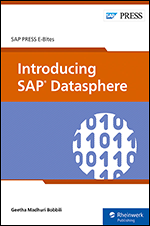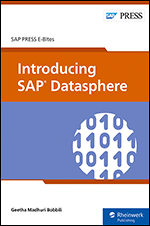Principles of Financial Modelling: Model Design and Best Practices using Excel and VBA
- 8h 14m
- Michael Rees
- John Wiley & Sons (UK)
- 2018
The comprehensive, broadly-applicable, real-world guide to financial modelling
Principles of Financial Modelling – Model Design and Best Practices Using Excel and VBA covers the full spectrum of financial modelling tools and techniques in order to provide practical skills that are grounded in real-world applications. Based on rigorously-tested materials created for consulting projects and for training courses, this book demonstrates how to plan, design and build financial models that are flexible, robust, transparent, and highly applicable to a wide range of planning, forecasting and decision-support contexts. This book integrates theory and practice to provide a high-value resource for anyone wanting to gain a practical understanding of this complex and nuanced topic. Highlights of its content include extensive coverage of:
- Model design and best practices, including the optimisation of data structures and layout, maximising transparency, balancing complexity with flexibility, dealing with circularity, model audit and error-checking
- Sensitivity and scenario analysis, simulation, and optimization
- Data manipulation and analysis
- The use and choice of Excel functions and functionality, including advanced functions and those from all categories, as well as of VBA and its key areas of application within financial modelling
The companion website provides approximately 235 Excel files (screen-clips of most of which are shown in the text), which demonstrate key principles in modelling, as well as providing many examples of the use of Excel functions and VBA macros. These facilitate learning and have a strong emphasis on practical solutions and direct real-world application.
For practical instruction, robust technique and clear presentation, Principles of Financial Modelling is the premier guide to real-world financial modelling from the ground up. It provides clear instruction applicable across sectors, settings and countries, and is presented in a well-structured and highly-developed format that is accessible to people with different backgrounds.
About the Author
MICHAEL REES, D.PHIL., MBA, operates globally to help senior executives to solve their most complex problems in the areas of decision support, business strategy, value-creation, risk assessment, and optimisation. He combines practical experience from top firms with an exceptional analytic record, and is among the world's leading authors and instructors in the field of financial and risk modelling. His special interest is in cases where issues in strategy, business economics, and valuation are best addressed using practical advanced quantitative approaches.
He has a Doctorate in Mathematical Modelling and Numerical Algorithms, and a B.A. with First Class Honours in Mathematics, both from Oxford University in the UK. He has an MBA with distinction from INSEAD in France. He also studied for the Certificate of Quantitative Finance, graduating top of the class for course work, and receiving the Wilmott Award for the highest final exam mark.
He has approximately 30 years' business and finance experience, in many sectors, including: oil, gas, energy and resources, private equity, health care, biotechnology, chemicals, construction, engineering, and insurance.
In this Book
-
Models of Models
-
Using Models in Decision Support
-
Core Competencies and Best Practices—Meta-Themes
-
Defining Sensitivity and Flexibility Requirements
-
Database versus Formulae-Driven Approaches
-
Designing the Workbook Structure
-
Creating Transparency—Formula Structure, Flow and Format
-
Building Robust and Transparent Formulae
-
Choosing Excel Functions for Transparency, Flexibility and Efficiency
-
Dealing with Circularity
-
Model Review, Auditing and Validation
-
Sensitivity and Scenario Analysis—Core Techniques
-
Using GoalSeek and Solver
-
Using VBA Macros to Conduct Sensitivity and Scenario Analyses
-
Introduction to Simulation and Optimisation
-
The Modelling of Risk and Uncertainty, and Using Simulation
-
Core Arithmetic and Logical Functions
-
Array Functions and Formulae
-
Mathematical Functions
-
Financial Functions
-
Statistical Functions
-
Information Functions
-
Date and Time Functions
-
Text Functions and Functionality
-
Lookup and Reference Functions
-
Filters, Database Functions and PivotTables
-
Selected Short-Cuts and other Features
-
Getting Started
-
Working with Objects and Ranges
-
Controlling Execution
-
Writing Robust Code
-
Manipulation and Analysis of Data Sets with VBA
-
User-Defined Functions




